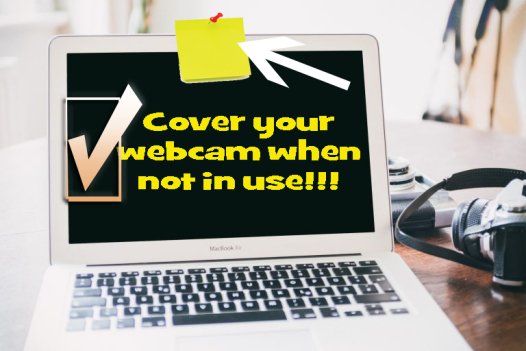Category: Tech tips
169 Tech Tip #26: My Mouse Doesn’t Work
 In these 169 tech-centric situations, you get an overview of pedagogy—the tech topics most important to your teaching—as well as practical strategies to address most classroom tech situations, how to scaffold these to learning, and where they provide the subtext to daily tech-infused education.
In these 169 tech-centric situations, you get an overview of pedagogy—the tech topics most important to your teaching—as well as practical strategies to address most classroom tech situations, how to scaffold these to learning, and where they provide the subtext to daily tech-infused education.
Today’s tip: #26: My Mouse Doesn’t Work
Category: Hardware
Q: My mouse stopped working. Do I need a new one?
A: Maybe, but try a few things first:
Share this:
- Click to share on Facebook (Opens in new window) Facebook
- Click to share on X (Opens in new window) X
- Click to share on LinkedIn (Opens in new window) LinkedIn
- Click to share on Pinterest (Opens in new window) Pinterest
- Click to share on Telegram (Opens in new window) Telegram
- Click to email a link to a friend (Opens in new window) Email
- More
169 Tech Tip #25: My Desktop Keyboard Doesn’t Work
 In these 169 tech-centric situations, you get an overview of pedagogy—the tech topics most important to your teaching—as well as practical strategies to address most classroom tech situations, how to scaffold these to learning, and where they provide the subtext to daily tech-infused education.
In these 169 tech-centric situations, you get an overview of pedagogy—the tech topics most important to your teaching—as well as practical strategies to address most classroom tech situations, how to scaffold these to learning, and where they provide the subtext to daily tech-infused education.
Today’s tip: #25: My Desktop Keyboard Doesn’t Work
Category: Hardware
Q: I need to type a lesson plan, but all I get is a cursor that blinks… and blinks… but goes nowhere. What do I do?
A: The first culprit to investigate is the keyboard. Try these solutions:
Share this:
- Click to share on Facebook (Opens in new window) Facebook
- Click to share on X (Opens in new window) X
- Click to share on LinkedIn (Opens in new window) LinkedIn
- Click to share on Pinterest (Opens in new window) Pinterest
- Click to share on Telegram (Opens in new window) Telegram
- Click to email a link to a friend (Opens in new window) Email
- More
Tech Tips #170: Cover your webcam!
 This is part of the 169 tech tips for your class-but this is a bonus, not included in the ebook, just for readers of Ask a Tech Teacher:
This is part of the 169 tech tips for your class-but this is a bonus, not included in the ebook, just for readers of Ask a Tech Teacher:
Tech Tip #170: Cover your webcam when you aren’t using it!
I used to do this and forgot about it. She came for a visit and slapped a post-it note over my webcam.
And she’s right! Webcams and mics are too easy to hack, been done often. Why risk it? When I want to use the webcam (which isn’t that often), I take the post-it off.
I’m not the only one. In questions during a conference at the Center for Strategic and International Studies, former FBI Director Comey revealed that cam-covering is commonplace at the FBI and other government offices:
“If you go into any government office, we all have our little camera things that sit on top of the screen, they all have a little lid that closes down on them. You do that so people who do not have authority don’t look at you. I think that’s a good thing.”
One more person who’s security conscious is that poster-boy for social media: Mark Zuckerberg. In a photo he tweeted out, he was caught doing just that. See what the geek experts noticed about this photo (one is that Mark covers his webcam as a matter of policy):
Share this:
- Click to share on Facebook (Opens in new window) Facebook
- Click to share on X (Opens in new window) X
- Click to share on LinkedIn (Opens in new window) LinkedIn
- Click to share on Pinterest (Opens in new window) Pinterest
- Click to share on Telegram (Opens in new window) Telegram
- Click to email a link to a friend (Opens in new window) Email
- More
169 Tech Tip #102: Doc Saved Over? Try This
 In these 169 tech-centric situations, you get an overview of pedagogy—the tech topics most important to your teaching—as well as practical strategies to address most classroom tech situations, how to scaffold these to learning, and where they provide the subtext to daily tech-infused education.
In these 169 tech-centric situations, you get an overview of pedagogy—the tech topics most important to your teaching—as well as practical strategies to address most classroom tech situations, how to scaffold these to learning, and where they provide the subtext to daily tech-infused education.
Today’s tip: #102–Doc Saved Over? Try This
Category: Google Apps
Sub-category: MS Office, Problem-solving
Q: My students often save a blank document over their document. Is there any way to retrieve the file?
A: Absolutely. If you’re on Google Docs, go to Revisions. Select the version of the document you know was correct and restore it.
Share this:
- Click to share on Facebook (Opens in new window) Facebook
- Click to share on X (Opens in new window) X
- Click to share on LinkedIn (Opens in new window) LinkedIn
- Click to share on Pinterest (Opens in new window) Pinterest
- Click to share on Telegram (Opens in new window) Telegram
- Click to email a link to a friend (Opens in new window) Email
- More
169 Tech Tip #78: Save a File so Everyone Can Read it
 In these 169 tech-centric situations, you get an overview of pedagogy—the tech topics most important to your teaching—as well as practical strategies to address most classroom tech situations, how to scaffold these to learning, and where they provide the subtext to daily tech-infused education.
In these 169 tech-centric situations, you get an overview of pedagogy—the tech topics most important to your teaching—as well as practical strategies to address most classroom tech situations, how to scaffold these to learning, and where they provide the subtext to daily tech-infused education.
Today’s tip: #78–Save a File so Everyone Can Read it
Category: Google Apps
Sub-category: MS Office
Q: I need to make my document readable by colleagues that don’t have my software (such as I use MS Word and they don’t). What do I do?
A: In both Google Apps and MS Office, you can save a document in a variety of formats, including the easy-to-read PDF. If you use Google Docs, you can also 1) share or 2) download in a variety of formations including PDF. This is also true of webtools that offer a wide variety of methods for saving and sharing. Pick the one best suited to the task, purpose, and audience.
In MS Office:
- click ‘save as’ for your document
- drop down the ‘save as type’ and select ‘PDF’
- save
If the problem is that the recipient doesn’t have a current version of MS Word (say, you have 2010 and they have 2003), then save the doc as follows:
- go to File-save as
- select file type 97-2003 (see first inset below).
Share this:
- Click to share on Facebook (Opens in new window) Facebook
- Click to share on X (Opens in new window) X
- Click to share on LinkedIn (Opens in new window) LinkedIn
- Click to share on Pinterest (Opens in new window) Pinterest
- Click to share on Telegram (Opens in new window) Telegram
- Click to email a link to a friend (Opens in new window) Email
- More
Virtual Reality in the Classroom: It’s Easy to Get Started
 Every teacher I know has virtual reality on their radar. It’s one of those short-listed disruptive technologies that kids want to be involved in and will change teaching for the better. I was thrilled when Amanda Ronan over at Teach.com suggested that she write a how-to for teachers on getting virtual reality started in their classrooms. I think you’ll enjoy her thoughts:
Every teacher I know has virtual reality on their radar. It’s one of those short-listed disruptive technologies that kids want to be involved in and will change teaching for the better. I was thrilled when Amanda Ronan over at Teach.com suggested that she write a how-to for teachers on getting virtual reality started in their classrooms. I think you’ll enjoy her thoughts:
Suddenly, virtual reality is everywhere. The technology lets you experience worlds you’ve never dreamed of visiting. You’ve seen people drop their phones into what look like small cardboard boxes and suddenly they’re transported back in time or to the moon.
As an educator, you probably look at those devices and wonder if you need a degree in computer science to figure out how to use them, let alone how to incorporate the tech into your classroom. But, we’re excited to let you in on the secret: VR is super easy to get started with.
Get Started with VR
Just follow these simple steps and you’ll be the hippest teacher around. Not to mention, your students will be totally engaged in the world, both real and virtual, around them. Set an example, and you might even get the whole school on board. Talk about leadership material.
1. Pick Your Equipment.
To use virtual reality in the classroom, all you need is a smartphone capable of downloading the VR apps or videos (more on those in a second) and a headset. The VR headset provides different screens, and therefore different images, for each eye. They also include sound and motion-sensors, so when you move your head, the image moves, too.
If your school has a BYOD (bring your own device) policy, you can ask for student volunteers willing to download the apps or videos onto their phones. You’ll only need enough phones with the apps as you have headsets. Teachers just getting started with VR usually start out by having groups share a headset.
One of the best ways to start out is with the Google Cardboard headset. There are a bunch of different options, but they start are $7.00 each. This keeps the tech affordable. If you order a few for your classroom and find yourself using VR more than you thought you would, order a few more. Or, if your students love the experience, you can possibly convince your district to invest in an account with Nearpod, an educational company that offers everything you need to do VR right, from the headsets, to standards-aligned lesson plans, to the opportunity to make and produce VR lessons yourself. Being a tech ambassador is a great way to influence change in your school on an organizational level so get excited and let your enthusiasm be contagious!
Share this:
- Click to share on Facebook (Opens in new window) Facebook
- Click to share on X (Opens in new window) X
- Click to share on LinkedIn (Opens in new window) LinkedIn
- Click to share on Pinterest (Opens in new window) Pinterest
- Click to share on Telegram (Opens in new window) Telegram
- Click to email a link to a friend (Opens in new window) Email
- More
End-of-Year Maintenance: 19 Steps To A Speedier Computer
 This week, I’m sharing three holiday activities that will get your computers, technology, and social media ready for the new year. Here’s what you’ll get:
This week, I’m sharing three holiday activities that will get your computers, technology, and social media ready for the new year. Here’s what you’ll get:
-
A note: The links won’t work until the articles publish!
Today: 19 Steps to a Speedier Computer
There are two ‘speed’ problems that arise when using computers:
- the computer itself is slow, for lots of reasons
- you are slow–meaning: You have too much to do. We’ll deal with this later…
Here’s what you need to do:
Share this:
- Click to share on Facebook (Opens in new window) Facebook
- Click to share on X (Opens in new window) X
- Click to share on LinkedIn (Opens in new window) LinkedIn
- Click to share on Pinterest (Opens in new window) Pinterest
- Click to share on Telegram (Opens in new window) Telegram
- Click to email a link to a friend (Opens in new window) Email
- More
End-of-year Maintenance: Image and Back-up Digital Devices
 This week, I’m sharing three holiday activities that will get your computers, technology, and social media ready for the new year. Here’s what you’ll get:
This week, I’m sharing three holiday activities that will get your computers, technology, and social media ready for the new year. Here’s what you’ll get:
- Update Your Online Presence
- Backup and Image your computer
- 19 Ways to Speed Up Your Computer
-
A note: The links won’t work until the articles publish!
Today: Image and Backup Your Digital Devices
Two critical maintenance tasks that lots of people skip are:
- image your computer
- back up your documents
Image your computer
Every computer must be reformatted eventually. Every time you download from a website or open an email attachment or update one of your online tools or software, you collect digital dust and grunge that affects the speed and efficiency of your computer. Performing the cleanup items suggested in 19 Ways to Speed Up Your Computer helps, but eventually not enough. The only way to return your computer to its original zippy youthful self is by reformatting.
Share this:
- Click to share on Facebook (Opens in new window) Facebook
- Click to share on X (Opens in new window) X
- Click to share on LinkedIn (Opens in new window) LinkedIn
- Click to share on Pinterest (Opens in new window) Pinterest
- Click to share on Telegram (Opens in new window) Telegram
- Click to email a link to a friend (Opens in new window) Email
- More
169 Tech Tip #59: Alt Keys
 In these 169 tech-centric situations, you get an overview of pedagogy—the tech topics most important to your teaching—as well as practical strategies to address most classroom tech situations, how to scaffold these to learning, and where they provide the subtext to daily tech-infused education.
In these 169 tech-centric situations, you get an overview of pedagogy—the tech topics most important to your teaching—as well as practical strategies to address most classroom tech situations, how to scaffold these to learning, and where they provide the subtext to daily tech-infused education.
Today’s tip: #59–Alt Keys Add Symbols
Category: Google Apps
Sub-category: MS Office, Webtools, Keyboarding, Problem-solving
Q: How do I create the copyright symbol (or another symbol) in Google Apps or Word?
A: It’s easier than you think. Hold down the Alt key and press 0169. ©. Use the keypad with the num lock on–don’t use the number row. I could not get this to work until someone pointed out that you must use the keypad. Duh.
Have students try out some others that would be useful for them. For example:
Share this:
- Click to share on Facebook (Opens in new window) Facebook
- Click to share on X (Opens in new window) X
- Click to share on LinkedIn (Opens in new window) LinkedIn
- Click to share on Pinterest (Opens in new window) Pinterest
- Click to share on Telegram (Opens in new window) Telegram
- Click to email a link to a friend (Opens in new window) Email
- More
169 Tech Tip #112: How to Open 2 Gmail Accounts at Once
 In these 169 tech-centric situations, you get an overview of pedagogy—the tech topics most important to your teaching—as well as practical strategies to address most classroom tech situations, how to scaffold these to learning, and where they provide the subtext to daily tech-infused education.
In these 169 tech-centric situations, you get an overview of pedagogy—the tech topics most important to your teaching—as well as practical strategies to address most classroom tech situations, how to scaffold these to learning, and where they provide the subtext to daily tech-infused education.
Today’s tip: #112–How to Open 2 Gmail Accounts at Once
Category: Email
Sub-category: Google Apps, Classroom management
Q: I have a home Gmail account and a school one. How do I open both at once so I can keep track of what my kids/home business/etc. is doing while at my teaching job?
A: I got this quick answer from efriend and tech guru Chris Hoffman: Open each account in a separate browser. It has to do with each browser keeping its own cookie.
Stepping back a moment, here’s why you might need this:
Share this:
- Click to share on Facebook (Opens in new window) Facebook
- Click to share on X (Opens in new window) X
- Click to share on LinkedIn (Opens in new window) LinkedIn
- Click to share on Pinterest (Opens in new window) Pinterest
- Click to share on Telegram (Opens in new window) Telegram
- Click to email a link to a friend (Opens in new window) Email
- More




































